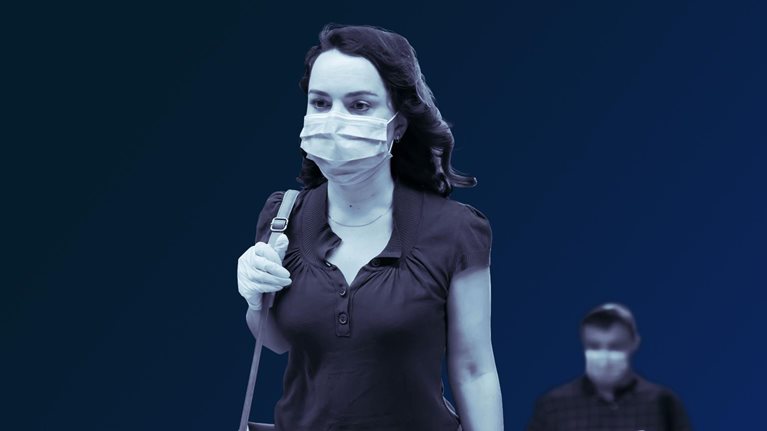Cities drive the global economy. During the next five years, 65 percent of the world’s GDP growth is expected to come from just 600 cities, despite those cities making up only 20 percent of the world’s population. Cities are the centers of wealth and prosperity—the GDP per capita of the world’s megacities is 80 percent higher than the GDP of the rest of their respective national economies. They achieve this outsized clout through the increased efficiency, productivity, and innovation that result from high-density, high-frequency interactions.
The COVID-19 pandemic has shaken this foundation, however, and prompted some to ask whether cities will continue to play such a vital role. Rather than take two steps back, though, megalopolises around the world should instead take this opportunity to rethink how the urban environment will work. The shape of this future has begun to emerge in cities that are already in post-COVID-19 recovery.
Over the course of Bloomberg’s 2020 New Economy Forum (NEF), public- and private-sector leaders from around the world discussed what the city of the future will look like. The COVID-19 pandemic has challenged cities and has provided an opportunity to reshape them, but it has not fundamentally altered these engines of prosperity.
Cities: What abides, what changes
Delegates agreed: cities will remain at the heart of the human experience. Lord Norman Foster, one of the world’s leading architects, argues that “cities will come back stronger.” Cities will be even more in demand as, more than ever before, they will continue to generate wealth, liberation, education, and technical innovation. A thought leader from a large developing nation noted, “Cities are labor markets. While some people have the luxury of moving in and out of cities, for the vast majority of people, cities are where the jobs are.” Carlo Ratti, a professor at MIT, concurred. “There is still a lot of value in meeting in physical space,” he said. China’s recovery suggests that people will return to offices and stores after the pandemic.
Nonetheless, the pandemic is an opportunity to rethink how we interact with the urban environment. “COVID-19 will accelerate trends that already exist, such as those that have long been debated in the past, including the greening or pedestrianization of cities,” said Lord Foster. “Take the example of Vilnius,” said the Lord Mayor of Dublin, Hazel Chu, “which has transformed completely during the pandemic, into an ‘open-air restaurant.’”
Cities’ transformation also touches on the allocation of space. Brick-and-mortar stores used to have a monopoly on retail and shopping, with 90 percent of the population in London within 15 minutes of a high street. That monopoly was fraying even before the COVID-19 outbreak as commerce moved online. But the virus delivered a double hit: stores closed during lockdowns, and the COVID-19 outbreak accelerated the shift to e-commerce. In the United States, for example, the share of all sales that are online is expected to reach 26 percent post-pandemic, an increase of 9 percent.
While delegates agreed that shops will continue to be at the heart of the urban experience, they will have to deliver something extra to become more engaging, stimulating, and inviting. Shoppers can now browse online, so physical stores may need to provide more experiential interactions that shoppers can’t replicate at home. “How people shop will be different. We will need to rethink how we build these places,” said Zhang Xin, CEO of SOHO China, one of China’s largest property developers.
In the same way, the home will also be rethought, as the line between personal living space and productive workspace blurs. Hybrid working is here to stay. A consumer survey conducted in the United States found that employees expected their “work from home” time as a percentage of total working hours to increase by nearly 40 percent, resulting in 27 percent of their working time spent at home. The role of the office will change. “I believe that the exchange of ideas, for which randomness and serendipity is important, cannot be fully moved online,” said Lu Ming, a professor at Shanghai Jiao Tong University. “Downtown areas will continue to be important for offline meetings.”
Implications for buildings and urban planning
All of these behavioral changes will significantly disrupt physical infrastructure, among other things, by boosting the need for better last-mile industrial delivery, increasing offices’ flexibility, or highlighting the importance of investment in health and wellbeing. Bjarke Ingels, architect and founder of the Bjarke Ingels Group, stated, “We have seen parking spaces being taken over for other uses.” In New York City that shift of space will persist, as it will likely also in cities like Athens, Milan, or Vilnius. The Woven City, at the base of Mount Fuji, Japan, will allocate equal space to roads for cars, promenades for micromobility vehicles such as bikes and scooters, and pedestrian-only parks. Such space allocation will allow inhabitants to “walk through the whole city as they would through a park,” noted Mr. Ingels.
The COVID-19 pandemic has also put a premium on urban planning that provides citizens the opportunities to interact frequently, while promoting health and equality among them. “The pandemic has changed people’s lifestyles, with a greater focus on long-term health,” observed Vanke chairman Yu Liang. This translates into initiatives to improve efficiency and access to mobility and create better public parks, as in Shenzhen, where all citizens are no further than 500 meters from a public park. Indeed, “the move to healthier cities will become mainstream,” said Lord Foster, exemplified by “the Bloomberg office in London or Apple’s headquarters, which use natural ventilation to achieve 2.5 times higher air turnover compared with normal air conditioning.” Similarly, Vanke’s Yu Liang said his company is rethinking HVAC systems to increase purification and heating for buildings in North China with the aim of reducing lung cancer.
Beyond its impact on mobility and health, the rethink of urban planning and zoning will be an essential tool to halt increasing inequity and segregation in cities, a trend that predated the pandemic and has been accelerated by it. While many affluent workers were easily able to shift to fully remote work, a vast portion of the world’s population had no such luxury. “Only 5 percent of jobs for lower-skilled employees can be done remotely,” said Professor Edward Glaeser from Harvard University. On a similar note Dublin’s Mayor Chu said, “We need to create a multilayered housing system. Cities need to integrate public housing with more luxurious housing, prompting citizens to share the urban-housing environment. You need to create places in cities that people can call home, but also integrate them within the wider community itself.”
The COVID-19 crisis should inspire a renewed focus on other environmental issues, from improving air quality to preparing to cope with the heat waves, storms, and floods that climate change seems sure to bring. Creating tech-enabled “smart cities” will help deliver the benefits of the city while mitigating health and environmental risks. Recent work by the McKinsey Global Institute finds that smart solutions have the ability to improve metrics of standard of living by 10 to 30 percent.1 Smart-city solutions also helped immensely in responding to the COVID-19 pandemic, for example, Singapore’s effective test, track, and trace strategy supported by apps and Bluetooth tokens.
Indeed, as was true before the COVID-19 pandemic, the future of cities is above all digital. “Something at the top of our minds has been digital connectivity, and COVID-19 has exposed a lot of gaps,” said Atlanta’s Mayor Keisha Lance Bottoms. “For example, many kids do not have Wi-Fi in their homes [hindering their ability to learn or work remotely].”
How can cities make these changes?
Addressing these enormous challenges demands bold and immediate action. NEF delegates highlighted the need for cities to collaborate closely with public and private players to improve housing, infrastructure, and financing.
Start with affordable urban housing. Lack of decent housing is integrally connected to health as well as economic challenges, from limited broadband access to essential health checkups foregone to make rent payments. Many NEF delegates are already taking action. “For every home we sell, we build one social house,” said Mohamed Alabbar, founder of Emaar Properties. Delegates called on governments to revisit regulations, including zoning and building codes, to unlock land and lower construction costs. Because for many owning their own house is not an option, renewed effort needs to be put in creating a market for affordable, high-quality rental housing as well.
Infrastructure will be key. “We have been able to make a lot of progress on infrastructure because people are not out as much,” said Atlanta’s Mayor Bottoms, who noted her city has also been able to “partner with a number of [its] technology companies” to address broadband shortfalls.
The pandemic has also pushed cities to rethink financing models in order to accelerate equitable growth post the COVID-19 crisis. Hillary Clinton, former US secretary of state, said, “We should continue to boost economic activity in SMEs.” Sri Mulyani Indrawati, Indonesia’s minister of finance, agreed. “We need to adjust the design of the stimulus. For example, SMEs with a digital presence have been less affected during the pandemic,” she said. In discussing an economic mobility plan for Atlanta, Mayor Bottoms said, “We’ve tried to put structures in place for people to access grants and small loans so that they aren’t just dependent on the federal government and all of the red tape and bureaucracy that that entails. We have also had to think about funding and think about how to go out to the bond market.”
Ultimately, empathy and a sense that both public and private institutions are pushing toward the same goals are important. “The genesis of strong partnerships is mutual respect for the roles that the other plays,” said one delegate. On that key point, Bill Gates wholeheartedly agreed. “Innovation can solve a lot of problems,” he said. “My belief in public–private sector collaboration was confirmed during the pandemic.”
Leaders of governments, cities, and private players at the Bloomberg New Economy Forum shared a profound belief in the power of cities to advance human society, even in the face of the pandemic. What the crisis has underscored is the imperative to adapt continually, often by accelerating responses that were already well under way, while not losing sight of what makes cities so special. “Before COVID-19,” said SOHO China’s Zhang Xin, “I didn’t know we could do most of our work on Zoom or have a global conference virtually.” But at the end of the day, she agreed that “we still crave being with other humans.” Cities that use this crisis to renew can ensure they provide a healthier and more equitable place to live for each and every citizen.

